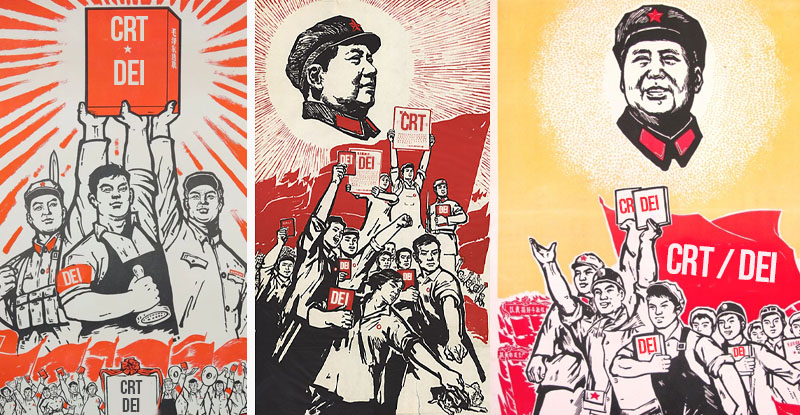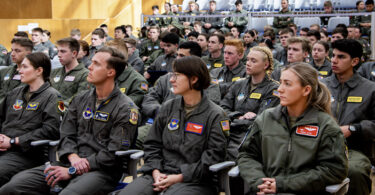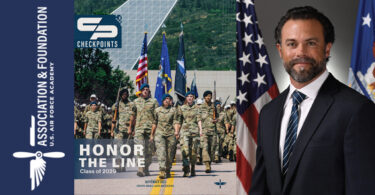By Forrest L. Marion, Ph.D.
Retired U.S. Air Force officer and military historian
A Maoist-style cultural revolution threatens the American way of life. Liberties that once were taken for granted are endangered, among them the freedom to think and express oneself in a civil manner.
Few conservative writers, however, provide much information in the way of ground-truth from China in the 1960s for today’s readers to make an informed comparison between Mao’s Cultural Revolution (1966-1976) and today’s American version.
A leading scholar on the Maoist roots of CRT/DEI, Dr. James Lindsay, views our present chaos as “a Maoist cultural revolution with American characteristics.” Indeed it is.
This commentary draws on scholarly publications from the period of the Cultural Revolution. These sources’ details may help to provide clarity for readers seeking to grasp the essence of the current American struggle over freedom of thought and expression.[i]
Chairman Mao’s Cultural Revolution was less than a year old when John Israel wrote an informative piece on the Red Guards and Communist Youth League (CYL or YCL) for The China Quarterly. In a 1967 issue, Israel – later, a history professor and China scholar at the University of Virginia – offered a historical perspective on the youth movement in China.
With the establishment of the People’s Republic of China in 1949, all student and youth organizations in the country were brought under control of the Chinese Communist Party (CCP). The CYL was the principal student-youth organization, numbering perhaps 35 million Chinese young men and women between the ages of 15 and 25.
Israel wrote, “To a generation of students educated entirely under communism, the path to success was clearly through [the] League and the Party.”
By 1964, the CYL’s leadership suspected that “evil and degraded elements” had infiltrated the League, seeking the opportunities that came with Party-approved programs without actually believing the required ideology.
Meanwhile, Party-friendly “radicals moved to sacrifice education in favour of indoctrination,” a trend that revealed the CYL to be “a relatively conservative force.” The League had little interest in Maoist doctrines.
In 1966, Mao initiated a new youth organization, the Red Guards, to reinvigorate the revolution by turning them loose against the “class enemy” or “exploiting” families – if not also, conveniently, eliminating Mao’s political rivals at the same time.
As Israel wrote, the “enormously complicated developments” taking place in China during the summer of 1966 were “hyperbolised” at Peking’s Tsinghua University, where different groups of Red Guards evolved in rapid succession.
One faction of Tsinghua’s Red Guards, which was followed by “the 88th Headquarters of Mao Tse-tung’s Thought Red Guards, and the Provisional Headquarters of Mao Tse-tung’s Thought Red Guards were born one after another” (emphasis added). The groups eventually merged.
In July 1967, a CCP-sanctioned editorial reinforced the preeminence of Chairman Mao’s thought. Discussing the cultural revolution’s progress, Red Flag stated, the People’s Liberation Army “should participate actively in this great movement to completely wipe out the evil influence left behind by . . . counterrevolutionary revisionists,” which “will further consolidate the leadership of Mao Tse-tung thought in our army” (emphasis added).
Numerous sources made clear that nothing was more important than the thought of Chairman Mao. There were “Mao study classes,” undoubtedly the envy of today’s DEI czars.
Mao’s Thought Red Guards promoted his ideas throughout the populace as well as ferreting out counterrevolutionaries whose “incorrect” thoughts were unacceptable and deserved punishment.
Today, we call the former DEI-training; the latter, cancel-culture against conservatives.
Until the last few years in America, perhaps only the most fanatical neo-Marxists imagined that Ibram Kendi’s or Robin DiAngelo’s Thought Red Guards could manage a cultural takeover here.
But not only do CRT/DEI Red Guards demand that once independent-thinking Americans adopt The Narrative of Inherent White Racism.
Chillingly, some Americans seem willing to allow these same neo-Marxists to claim to know why you think what you think.
If one (especially white or one categorized as white because of high achievement) dares to express disapproval with any idea affiliated with The Narrative, today’s Thought Red Guards have the power to know with apparent certitude that the “incorrect” political orientation (thought) is motivated by racism – rather than by adherence to reason, history, tradition, founding principles, or personal convictions.
Does it need to be restated that Chairman Mao was responsible for the deaths of more individuals than anyone else in human history? The numbers are uncertain, but 50 million is a reliable minimum.
Without question, Mao’s Thought Red Guards of 1966 bear a horrifying similarity to initiatives here to shut down the individual’s freedom of thought and expression:
from social media de-platforming to shouting down (or doing worse to) speakers with opposing viewpoints to government attempts to establish quasi-truth-ministries to university officials pressuring student-run newspapers to government/school officials calling out parents as “domestic terrorists” to demands for fraudulent pronoun usage – and so on.
But for anyone tempted to yawn at what might seem, initially, to be a narrow-ish issue – freedom of thought and expression – heed noted author James Michener.
In his classic novel, The Bridges at Toko-Ri, when Navy Lieutenant Harry Brubaker’s Banshee aircraft is hit in combat over Korea, Michener wrote:
“Like the society which had conceived the engine, the turbine was of such advanced construction that even trivial disruption of one fundamental part endangered the entire structure.”
Free expression is “one fundamental part” of our endangered American way of life.
Reclaiming it begins by refusing to speak The Narrative Lies.
–
Forrest L. Marion, Ph.D., is a retired U.S. Air Force officer and military historian. He is the author of Flight Risk: The Coalition’s Air Advisory Mission in Afghanistan, 2005-2015 (Naval Institute Press, 2018), and (forthcoming), Standing Up Space Force: The Road to the Nation’s Sixth Armed Service (Naval Institute Press).








Leave a Comment